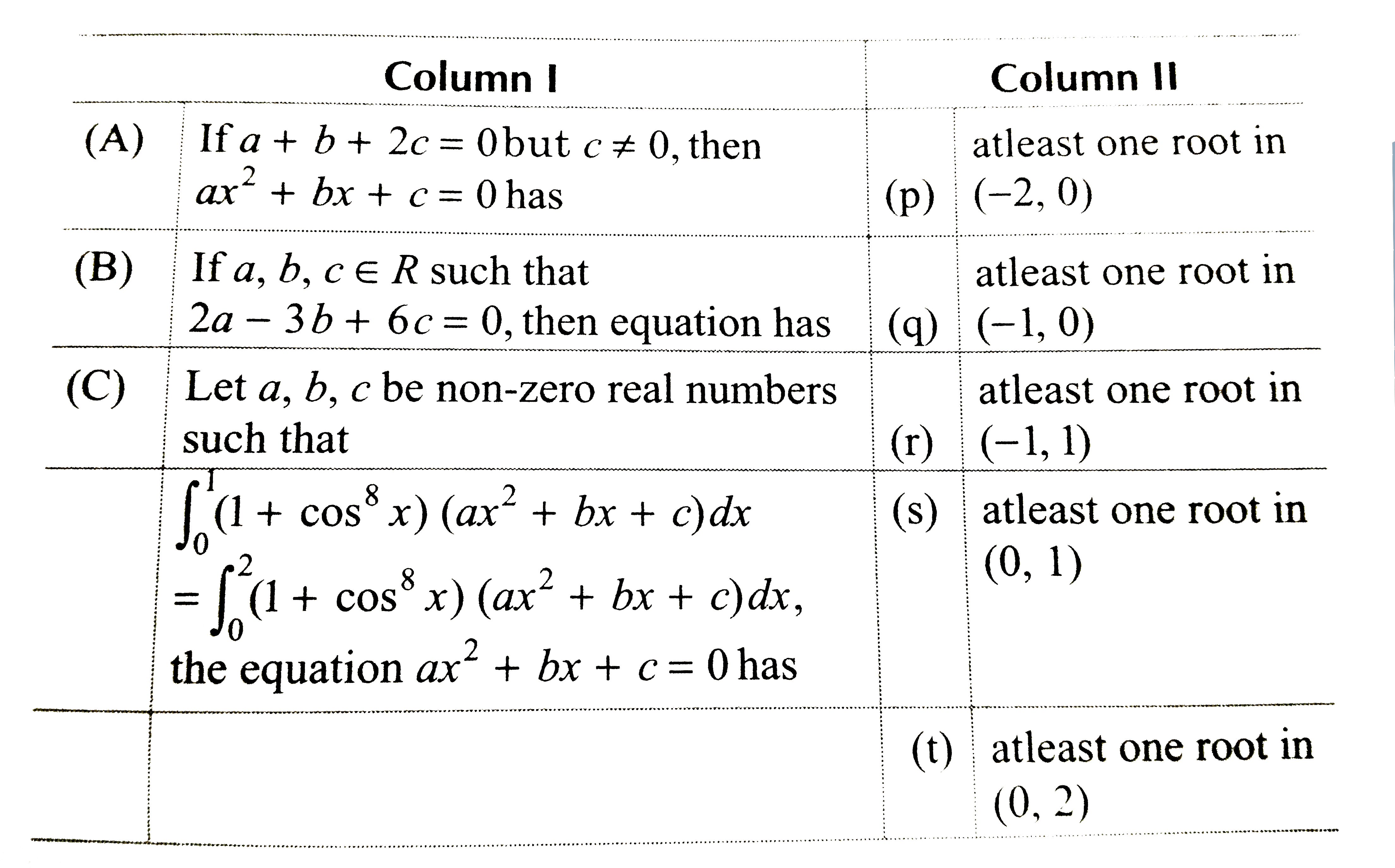Entries of column I are to be matched with one or more entries of column II.
 Solution in Gujrati
Solution in Gujrati
(A)r→(r,s,t),(B)→(p,q,r),(C)→(r,s,t)
(A)Let f(x)=ax2+bx+c
Then f(1)=a+b+c=−c[∵a+b+2c=0]
and f(0)=c
∴f(0)f(1)=−c2<0[∵c≠0]
∴ Equation f(x)=0 has a root in (0,1).
∴f(x) has a root in (0,2) as well as in(−1,1)(r)
(B)Let f'(x)=ax2+bx+c
∴f(x)=ax33+bx22+cx+d
∴f(0)=d
and f(−1)=−a3+b2+c=d=−(2a−3b+6c6)+d
=0+d=d[∵2a−3b+6c=0]
Hence f(0)=(f−1)
Hence f'(x)=0 has atleast one root in (−1,0)(q)
∴f(x)=0 has a root in (−2,0)(p) as well as (−1,1)(r)
(C)Let f(x)=∫(1+cos8x)(x2+bx+c)dx
Given f(1)−f(0)=f(2)−f(0)
⇒f(1)=f(2)
⇒f'(x)=0 has atleast one root in (1,2).
⇒(1+cos8x)(ax2+bx+c)=0 has atleast one root in (1,2).
⇒ax2+bx+c=0 has atleast one root in (0,2) (t)
Similar Questions
The inequation that best describes the graph given below is _________
View SolutionThe inequation that best describes the following graph is _________
View SolutionMatch the followings (column I with column II)
ltimg src="https://d10lpgp6xz60nq.cloudfront.net/physics_images/NCERT_BIO_XI_C03_E01_011_Q01.png" width="80%"gt
View SolutionMatch the following:
ltimg src="https://d10lpgp6xz60nq.cloudfront.net/physics_images/NCERT_BIO_XI_C04_E01_014_Q01.png" width="80%"gt
View SolutionMatch the terms in column I with those in column II: ltimg src="https://d10lpgp6xz60nq.cloudfront.net/physics_images/NCERT_BIO_XI_C07_E01_011_Q01.png" width="80%"gt
View SolutionMatch column I with column II
ltimg src="https://d10lpgp6xz60nq.cloudfront.net/physics_images/NCERT_BIO_XI_C16_E01_002_Q01.png" width="80%"gt
View SolutionMatch column I with column II:
ltimg src="https://d10lpgp6xz60nq.cloudfront.net/physics_images/NCERT_BIO_XI_C18_E01_003_Q01.png" width="80%"gt
View SolutionMatch the items of column I with those of column II: ltimg src="https://d10lpgp6xz60nq.cloudfront.net/physics_images/NCERT_BIO_XI_C19_E01_011_S01.png" width="80%"gt
View Solution
